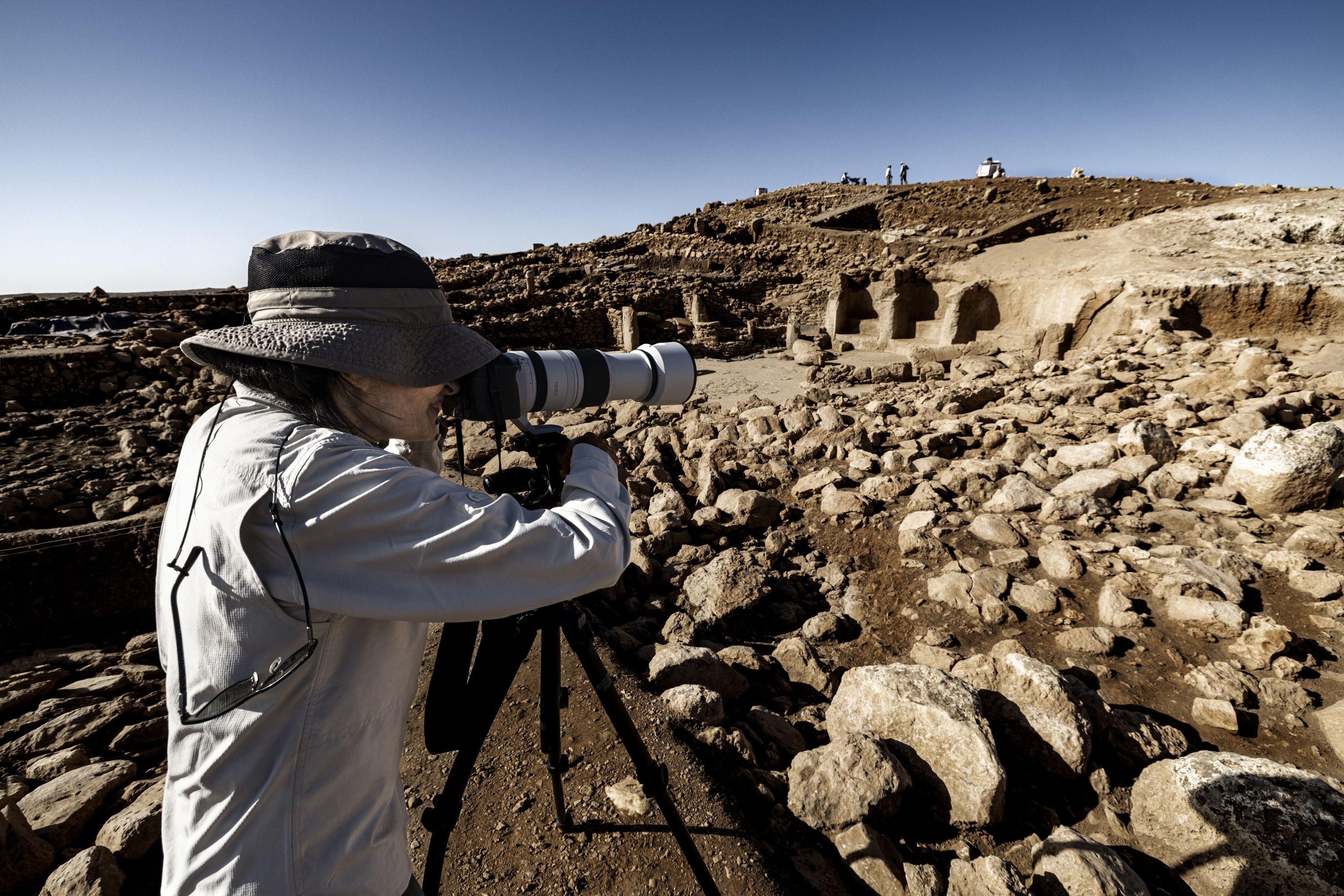© Turkuvaz Haberleşme ve Yayıncılık 2026
"Isabel Munoz: A New Story – Photographs From and Around Göbeklitepe" exhibition hosted by Pera Museum in Istanbul will feature the photographs of renowned Spanish photographer Isabel Munoz, known for her monochromatic portraits that explore different cultures and people from various geographies.
Munoz, invited by the Pera Museum, captures the ancient site of Göbeklitepe, also known as Potbelly Hill and its surroundings, believed to be the zero point of history. Through her photographs, she delves into the questions of mystery, origins and infinity that captivate her in this magnificent historical region.
The exhibition opens to the public on June 15, and the Pera Museum will also host an international archaeology seminar organized by the Embassy of Spain in Türkiye and the Istanbul Cervantes Institute on the same day.
Presented for the first time in Istanbul, the exhibition showcases Isabel Munoz's photographs of the archaeological sites in Göbeklitepe and its surroundings, which have a history dating back approximately 12,000 years. Munoz has been involved in many international photography projects and has received awards such as the Spanish National Photography Award and the Hasselblad Foundation International Photography Award. Her works have been exhibited in prestigious institutions like the Venice Biennale and the International Center of Photography in New York.
She first met art goers in Türkiye with her exhibition in Istanbul in 1992.

Driven by her passion for exploring and reflecting the nature, aesthetics and way of life of different cultures, Munoz turns her attention to Türkiye's significant archaeological sites such as Göbeklitepe, Karahantepe and Sayburç, which are some of the important settlements of the Neolithic period located in Şanlıurfa, in this exhibition.
She not only captures the hallucinatory images that oscillate between mystery and artwork in these dazzling sites but also humbly bows before the magnificent scenes reflected in her frame. For this, the exhibition offers an opportunity to explore the "Taş Tepeler" ("Stone Hills"), which are believed to be the world's oldest cultic area and have been part of the UNESCO World Heritage List since 2018, through Munoz's captivating perspective.
Göbeklitepe and other sites under the name of "Stone Hills" were contemporary to each other and covered a period of some 1,500 years, he said, stressing that all the findings from these sites reflect the culture of that period. He added that the first agricultural experiments were carried out in this region according to those findings.
"Isabel Munoz: A New Story – Photographs From and Around Göbeklitepe" will host intriguing works, including Munoz's utilization of the "Tepetype" printing technique she developed using soil and an extraordinary self-portrait reflecting her brain's electrical waves through electroencephalogram (EEG) with the symbolic human head figure at the Neolithic site of Karahantepe.
In parallel with the exhibition, the Pera Museum will host an international archaeology seminar, "Lifting the Mists of Time," focusing on Göbeklitepe and prominent archaeological studies in Spain. Organized by the Embassy of Spain in Türkiye and the Istanbul Cervantes Institute, the event will bring together academicians and archaeologists from both countries.
